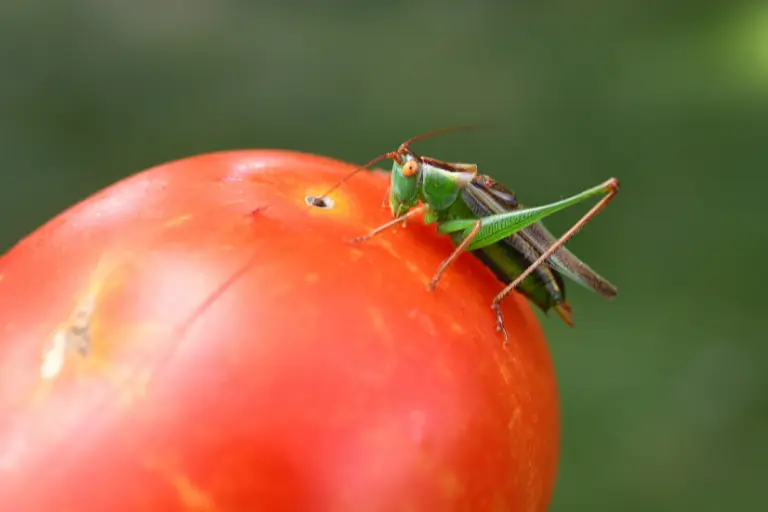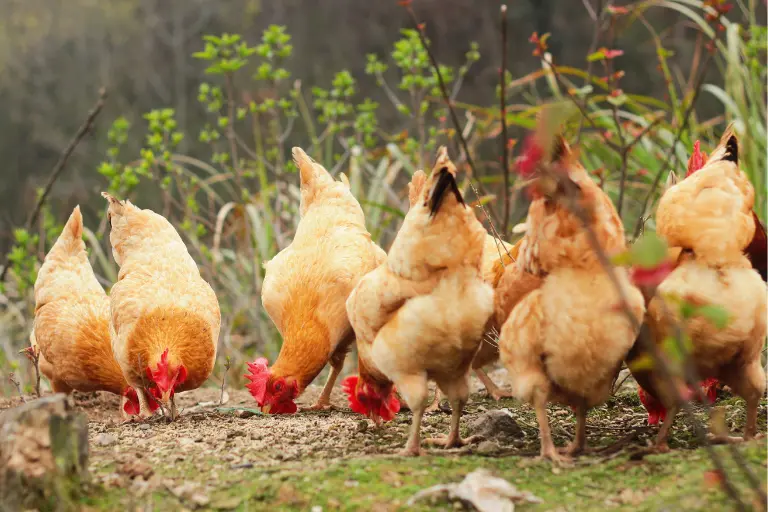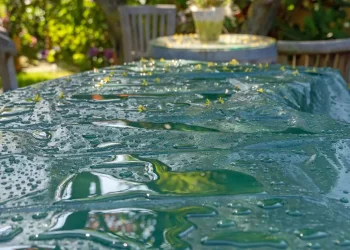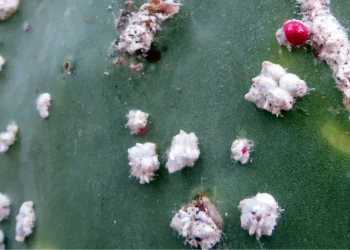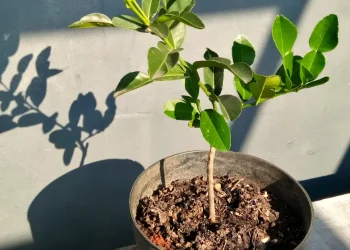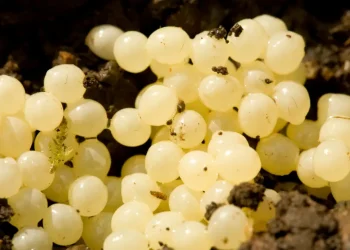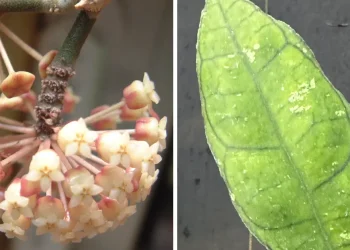Tomatoes are very easy to take care of, they require consistent watering and will happily grow in direct sun, but it’s far more difficult to keep them healthy. Especially when unwelcome guests – grasshoppers – decide to give your garden a visit.
Grasshoppers are herbivorous insects, which means they primarily feed on plant matter. They have a wide-ranging appetite and will consume a variety of vegetation. When they come to your garden, they prefer other garden plants, especially leafy, tender greens such as lettuce, spinach, and kale. But if there’s a food shortage or they are overpopulated, they will also feed on your tomato plants.
Grasshoppers can turn all the joy into a headache, leaving your tomato plants weak or even killing them. But that comes to an end now. In this article, we’ll inspect what parts of tomato plants do grasshoppers eat, and I will share some tips on how to keep grasshoppers off tomato plants and, ultimately, off your whole garden.
Do Grasshoppers Eat Tomato Plants?
Yes, mature grasshoppers can eat tomato plants, although they prefer other garden treats. On top of their list, you’ll find tender greens such as lettuce, spinach, and kale. They also will feed on carrot, raspberry, bean, and corn leaves. When facing food shortages, drought, or a population surge, they may resort to feasting on your tomato plants. They eat almost every part of the tomato plant, starting from the leaves and flowers. This will make the plant unable to photosynthesize and ultimately survive. Grasshoppers can also transmit microbes, infecting your tomato plant with different, devastating diseases.
From tomato plants, they also eat both young and mature tomato plants, although they prefer younger plants, as they are more tender.
Just a few grasshoppers are manageable, but when they start to swarm, they can destroy your whole garden within one or two days.
Do Crickets Eat Tomatoes?
Even though the difference between a cricket and a grasshopper doesn’t have to be obvious right away, you can find a few. Primarily, crickets are omnivores, whereas grasshoppers are herbivores.
This can change the game. If crickets also eat other insects, will they also feed on your tomato plant? Unfortunately, yes. Baby crickets feed primarily on grains, fruits, seeds, grasses, and, if they need to, even tomatoes. Mature crickets usually prefer insects as aphids or larvae, but they will eat nearly everything they can get their mouth to in nature.
How to Keep Grasshoppers Off Tomato Plants
As soon as you spot grasshoppers, more than occasionally, in your garden, you should take action. Grasshoppers reproduce very fastly. Males fertilize the females, who will lay eggs for the rest of her short life. A single female grasshopper will lay about 100 eggs, that’s potentially 100 more grasshoppers feeding on your tomatoes, so you have to act fast.
One way to do things is, of course, picking them off and killing them. However, this isn’t much effective, as you never can get your hand on the full population in your garden. Similarly, you can encourage natural predators, like birds, mantises, and spiders, that feed on grasshoppers to help control their population. But that’s something you can’t do very deliberately.
But there are many ways to keep grasshoppers off your tomatoes more effectively. Let’s take a look at some of them.
Plant Repellent Herbs
Companion planting is an effective way to boost your garden as a whole. Planting one plant in close proximity to another can help attract pollinators or beneficial insects or can help control pests.
Grasshoppers especially dislike some distinctive herbs like cilantro, basil, or marigold. They have natural properties that act as deterrents to these hungry insects.
Other plants with strong scents can also help. Such as jasmine, sage, lilacs, or salvia.
Keep the Area Free of Weeds
Keeping the area around your tomato plants free of weeds not only deter grasshoppers from invading your garden but also provide fewer places for grasshoppers and grasshopper nymphs (young grasshoppers) to hide, making them easier to spot for you and natural predators.
Not only does this practice help in grasshopper management, but it also promotes better air circulation and nutrient uptake for your tomato plants, resulting in healthier growth and better yields.
Give them Something Different to Eat: Molasses and Water
If you remember, grasshoppers prefer a few other greens and foods before feeding on your tomato plants. So why not provide that to them?
By mixing molasses and water, you can create a simple, homemade grasshopper bait and lure them away from your garden. The sweet scent of molasses acts as a powerful attractant, drawing grasshoppers to the baited area. They will very happily prefer this over your tomatoes.
In a jar, mix 10 parts of water with 1 part of molasses. Then bury it partially underground so they can easily access it.
Molasses is a dark, thick syrup that is created as a byproduct of the sugar-making process. It is not as sweet as sugar, which is great because insects, such as grasshoppers, avoid high concentrations of sugar. But if you do not have molasses on your hand, you can perfectly substitute it with sugar in a slightly lower concentration, 1:7 should do it.
Get Ducks or Chickens
Some natural predators, such as spiders or mantises, can be hard to control, and before you know it, instead of a grasshopper issue, you have overpopulated spiders in your garden.
But ducks, gooses, or chickens are real grasshopper-eating machines. By allowing them to roam freely in your garden, they will hunt and consume grasshoppers and other small insects, keeping their numbers in check. Not only will they help control pests population, but they will also positively contribute to their health, enriching their diet.
Just be mindful to shield low-hanging fruits or young seedlings, as these curious creatures may also peck on them.
Use Insecticide or Soapy Water and Other Natural Repellents
A more direct and immediate approach is using insecticide or soapy water. You can find insecticides specifically formulated to target grasshoppers on the market. However, this approach can also harm your tomato plants, so I would choose this method only if the situation with grasshoppers got out of control.
For a less invasive way, you can try one of these DYI, fully natural repellents. These won’t straight-up kill grasshoppers but will effectively keep them away without harming your tomatoes.
Soapy Water
Grasshoppers, like most insects, breathe through openings on their skin. When you apply soapy water to your crops, it will coat their bodies and block the airways. So they will ultimately die if they do not leave.
To make simple soapy water to use on your tomato plants, mix one to two tablespoons of mild liquid soap with one quart (one liter) of water. This will make a very diluted solution, enough to keep grasshoppers away and not hurt your plants.
Add the solution to a spray bottle and apply as needed directly on the surface of the plants. Ideally, apply the soapy water solution in the early morning or late afternoon when grasshoppers are most active. Reapply as needed, especially after rain or heavy watering.
Neem Oil
Studies show that when exposed to neem oil, grasshopper nymphs become lethargic and solitary, making them easier prey for natural predators. Neem oil isn’t a strong repellent but disturbs many processes in grasshoppers, essentially making them unable to feed on your tomato plants.
We won’t be using concentrated neem oil, as it would be unnecessarily strong, but we’ll dilute it. Add 1 tablespoon of neem oil to about 3 quarts (2.8 liters) of water and mix it well. Even though it has “oil” in its name, it’s fully water-soluble, so don’t worry. You can also add a bit of liquid soap for a double effect.
Then transfer it to a spray bottle for easy application and spray directly on your tomato plants, paying extra attention to the leaves and stems. It should stay effective for about a week, but make sure to reapply after rainfall or heavy watering.
When doing a research for this article, I found some publication claiming, that Neem oil is toxic to cats and dogs. No, it isn't as per the ASPCA Poison Control Center or Pet Poison Helpline. So don't worry about using it when you have cat or dog running in the garden - they probably won't even come close to your plants, because they hate the smell of Neem oil.
Garlic Infusion
Garlic is well-known for its pungent odor, which grasshoppers find unappealing. You can either take a clove or two of garlic and spread it over the soil. But from my experience, this takes too much time, and it isn’t as effective because a grasshopper can still jump to the very top leaf without noticing any garlic.
I find it much more effective to make a simple garlic infusion. Chop or crush several cloves of fresh garlic (1 clove per quart or liter of water is enough) and steep them in water for 24 hours. Then strain the garlic pieces from the infused water and transfer to a spray bottle. Finally, spray the garlic infusion directly onto your tomato plants, and reapply regularly.
This natural repellent not only keeps grasshoppers away but also carries antiseptic effects, keeping your plants free from fungus.
There are a few other simple DIY repellents and insecticides, for more, check out my guide on Non-Lethal Pest Solutions.
How to Know if There are Grasshoppers in the Tomato Garden?
There are many insects and parasites that can take your garden by attack. Fortunately, many of the methods mentioned above will work universally, no matter if it’s against a cricket, grasshopper, or slug.
Grasshoppers usually leave irregularly shaped holes and notches on the leaves. These holes extend in from the leaf margins and between the veins. A good way to know if the damage is caused by grasshoppers is to observe your garden during the early morning or late afternoon, as they are most active during these times.
Secondly, examine the soil, stems, and foliage of your tomato plants for any evidence of grasshopper eggs. They have a very distinct visual. they are cylindrical eggs, usually bronze in color, as you can see in the image below.
As grasshoppers do not attack any specific plants, you should be able to observe a general decline in your garden’s health or stunted growth. Lastly, you will likely find at least a few grasshoppers jumping around your garden. Mature grasshoppers have fings and can be in search of different sources of food, but young grasshoppers can’t fly, so you’ll likely spot a few.
Conclusion
Grasshoppers are herbivorous insects, and you can find them chewing on various plants in your garden. They don’t have any specific plant they would attack, so as the day goes on, they can choose to feed on your tomato plants.
Protecting your tomato plants from grasshopper damage requires a fast reaction. One female will lay about 100 eggs, and before you know it, you have a swarm in your garden.
Before these issues arise, you can plant repellent herbs like basil and marigold that can make your crops unattractive for these uninvited guests. Additionally, ducks or chickens can serve as natural foragers to control their population.
If, after all, grasshoppers become too much of an issue in your garden, you can buy an insecticide or create natural repellents.


